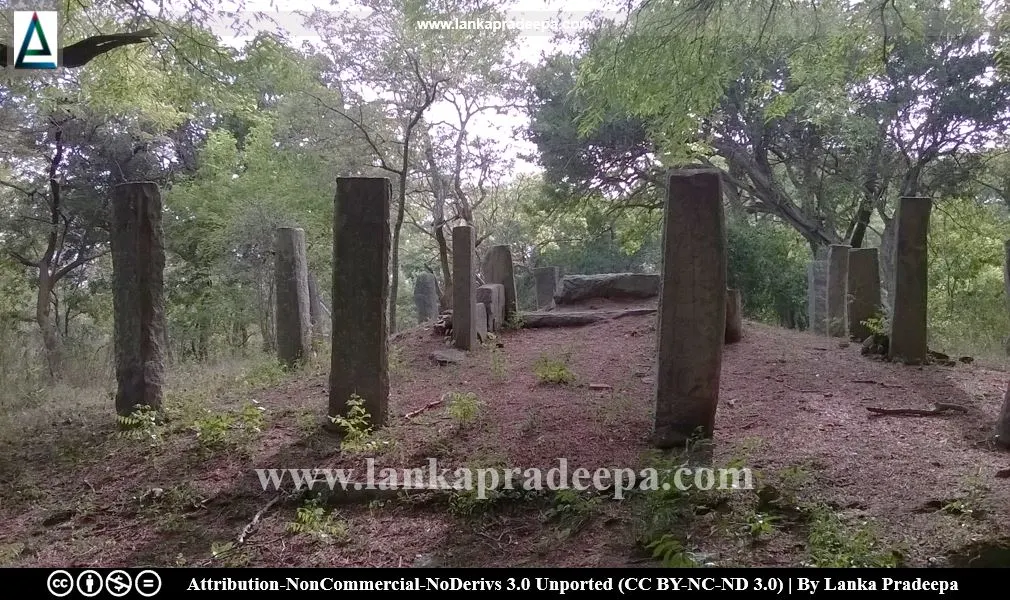
Seruwila Mangala Raja Maha Viharaya, also known as Seruwawila Viharaya (Sinhala: සේරුවිල මංගල රජමහා විහාරය), is a Buddhist temple situated in Seruwawila in Trincomalee District, Sri Lanka. It remains on the Tentative List of World Heritage Sites (UNESCO) since 2006.
History

In about the 2nd century B.C., there was a provincial kingdom named Seru in Seruwawila. According to chronicles such as Dhatuvamsa, Prince Kavantissa of Ruhuna (205-161 B.C.) built a Stupa named Mangala Maha-cetiya there, by enshrining the frontal bone of the Buddha. The Stupa at the present Seruwila Viharaya is identified as the ancient Mangala Maha-cetiya (also known as Tissamaha-vehera) built by Kavantissa (Ranawella, 2005). However, the 10th-century "Seruwila rock inscription of Sirisangabo" which was discovered from the temple premises has referred to the monastery at the site as Kuratis Mahavehera (Ranawella, 2005). This epigraphical evidence, therefore, has raised some doubt regarding the true identity of this site (Ranawella, 2005).
Decadence
Over the years, the Seruwila Stupa and the temple fell into decay due to the consequences of the Cola and Pandya invasions from South India (de Thabrew, 2013).
Restoration
The ruined Seruwil Stupa and the temple were rediscovered in 1921 by a Buddhist monk named Ven. Dambagas-are Sri Sumedhankara (1892-1984). He, with the assistance of others, restored the Stupa and the temple (de Thabrew, 2013). The restoration work of the Stupa was completed with a pinnacle-placing ceremony held on 8 September 1930 (de Thabrew, 2013).
Inscriptions & other monuments

A few inscriptions belonging to the period between the 2nd century B.C. - 10th century A.D. have been found at the site (Dias, 1991; Paranavitana, 1970; Ranawella, 2005).
Seruwila cave inscription
This cave inscription was copied by the Department of Archaeology in 1949.
Period: 2nd century B.C. Script: Early Brahmi
Language: Old Sinhala
Transcript: Bata Gutaha lene caduke......
Translation: The cave of lord Gutta (is dedicated to the Sangha of) the (four quarters)
Citation: Dias, 1991.p.25.
Seruwila rock inscription
This rock inscription was discovered near a flight of steps and copied by the Department of Archaeology on 2 October 1962.
Period: 1st century A.D. Script: Early-Brahmi Language: Old Sinhala
Transcript: (Upa)saka Dataha (lene)
Translation: (The cave of) devotee Datta
Citation: Dias, 1991.p.26.
Another two Early Brahmi Inscriptions belonging to the 2nd and 1st century B.C. have been discovered in the archaeological reserve at Seruwila (Dias, 1991).
Seruwila rock inscription of Sirisangabo
Period: 10th century A.D. Script: Medieval Sinhala Language: Medieval Sinhala
Content: This fragmentary inscription says it is a boundary stone. It also mentions a monastery named Kuratis Maha-vahara and the names of two Buddhist monks.
References: Ranawella, 2005.
Besides inscriptions, the temple also comprises a large number of other monuments including the old entrance gates, image house, ruined monastery buildings, Chapter House, ponds, caves with primitive paintings, etc.
Archaeological Museum
A small site museum of the Archaeological Department has been established on the
premises of Seruwila Viharaya. The museum is used to exhibit antiquities
recovered from the temple.
An archaeological reserve
The land including the Seruvila Stupa (P.P.S. 96 lot no.1 to 4: consists 84 acres, 0 roods, 29 perches) situated in Seruwawila village in the Divisional Secretary’s Division, Seruwila is an archaeological reserve, declared by a government Gazette notification published on 16 November 1962.


.
See also
Reference
1) de Thabrew, W. V., 2013. Monuments and Temples of Orthodox Buddhism in India and Sri Lanka. Author House. p.70.
2) Dias, M., 1991. Epigraphical notes (Nos 1 -18). Colombo: Department of Archaeology. pp.25-26,65,68.
3) Paranavitana, S., 1970. Inscription of Ceylon (Vol. I). Department of Archaeology Ceylon. p.93.
4) Ranawella, S., 2005. Inscription of Ceylon. Volume V, Part III. Department of Archaeology. ISBN: 955-91-59-57-7. p.85.
5) The Gazette notification. no: 13394. 16 November 1962.
2) Dias, M., 1991. Epigraphical notes (Nos 1 -18). Colombo: Department of Archaeology. pp.25-26,65,68.
3) Paranavitana, S., 1970. Inscription of Ceylon (Vol. I). Department of Archaeology Ceylon. p.93.
4) Ranawella, S., 2005. Inscription of Ceylon. Volume V, Part III. Department of Archaeology. ISBN: 955-91-59-57-7. p.85.
5) The Gazette notification. no: 13394. 16 November 1962.
Location Map
This page was last updated on 2 July 2023

